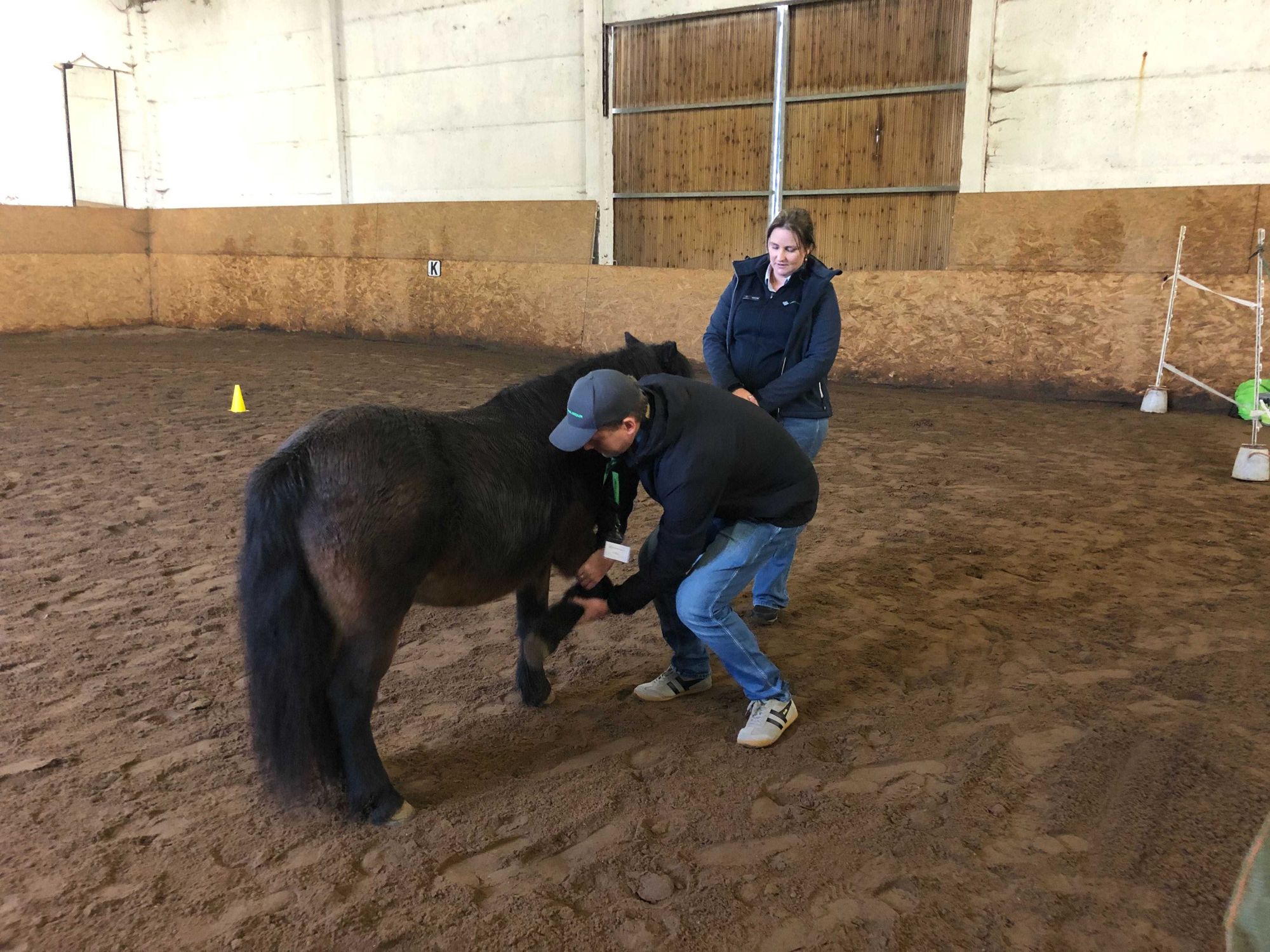One of Us
About a decade ago, a friend of mine, Nina (not her actual name), disappeared into a religious cult. Nina broke with her family in a pretty destructive way. After a few years, we heard she had had a child with a cult leader. Her parents never met their grandchild.
Until well into my teenage years, once or twice per year we’d spend a long weekend with my dad’s study mates and their kids. Many of the kids were pretty much my age, Nina included. Even though we only spent about a weekend or two per year together, with an occasional additional birthday or anniversary, I felt I knew them well. They were my friends. They were like me. They were normal, rational, intelligent people.
So, how could Nina end up joining a religious cult? She used to be one of us, how did she become one of them? I could never figure it out.
Then, a few months ago I read a review of two documentaries about NXIVM in The Atlantic. NXIVM (pronounced nexium) was an organization that presented itself as a self-improvement training center, but ultimately turned out to be a sex cult. It was lead by Keith Raniere who (spoiler alert) was recently sentenced to 120 years in prison. NXIVM had some high-profile members like Allison Mack (actress from Smallville), Bonnie Piesse (actress in Star Wars), and India Oxenberg (daughter of Catherine Oxenberg of Dynasty, and grand daughter of the Princess of Yugoslavia).
With the story of Nina always in the back of my mind, the topic of cults intrigued me. Therefore, me and wife ultimately ended up watching both these documentaries, starting with HBO’s The Vow.
Ever since, I’ve been musing about cults and what they tell us about people: how we can be manipulated, about group dynamics in general, and about good and evil. So, you know, the trivial topics. Also, it reconfirmed that judging people from a distance is all too easy. And: it turns out that I don’t know anything about people.
The Vow is primarily based on material recorded by a few high-profile people that left NXIVM a few years ago. One of them was a film maker. Since Keith Reniere (the cult’s leader) was enough of a narcissist and quite set on documenting a lot of his “world-altering” work, a significant part of The Vow consists of actual footage shot from the inside. This results in an interesting telling of the NXIVM story from the insider’s perspective. It shows how one may be pulled into an organization like this, and how things can be made to look perfectly fine from the inside.
Mark Vincente (the film maker) says in one of the episodes “people don’t join a cult, they join a cause they believe in.” And that is exactly how it all starts out: there’s a training called Executive Success Programs (ESP) that he somewhat randomly joins. During The Vow we don’t learn all that much about the content of the training, it seems to be about challenging some foundational beliefs: the meaning of victimhood, limiting beliefs, letting go of envy. All things that at the surface seem fine, and potentially helpful.
But all the while you know that in the end this turns out to be a sex cult. A frickin’ sex cult. Where women were physically branded with Keith Reniere’s initials.

That’s insane. How do you slide from a seemingly useful self-help training to that?
The Vow gives a reasonable explanation of that trajectory. However, it’s a somewhat narrow explanation coming mostly from the people that escaped the cult. Maybe that’s also why it works so well: it gives a pretty good understanding of how one may be pulled into something like this step-by-step. It makes it somewhat plausible that it can take a lot of time to reach a point where you figure out: “_WTF_ am I doing?” In the case of some of people in The Vow: it can take well over a decade. A decade of your life wasted.
But at least they got out. In the meanwhile, Nina is still in. Nevertheless, even though this was a different type of cult than Nina’s, it gave some hints towards how something like this may happen, even to seemingly rational people.
It did leave one big question, though.
Likely most of the people in NIXVM (and cults in general) can be qualified as victims. However, what about the cult leaders themselves? What about Zef’s Razor, what about the idea that people are pretty decent? Specifically, what about Keith Reniere? Is he the exception that proves the rule? Was he just evil, or did his success in creating a movement that originally had the intention of being for the greater good, somehow escalate in something bad? Maybe he somehow lost control? Perhaps he could simply not resist the power it gave him, and it brought out the worst in himself and other people?
In other words: what was Keith’s intention going into this?
In The Vow for quite a few episodes, if you’re a strong believer in people being good like me, this remains an open question. For some time, I remained hopeful. But ultimately, only one conclusion can be drawn: this guy is bad news, and was bad news from the beginning. It would be interesting to explore how he became this way (this remains unanswered). NXIVM wasn’t set up to fix the world, it was set up for Keith’s very specific needs. A well-executed play of a very dangerous game.
After finishing The Vow, we immediately proceeded to watch the second documentary on NXIVM: Seduced: Inside the NXIVM Cult.
Interestingly, this one tells the story from the perspective of one of the people The Vow people were attempting to save: India Oxenberg, who apparently got out before the whole thing collapsed. Seduced is a more balanced documentary in that it doesn’t just tell the story from the perspective of people who left the cult, it also includes interviews and adds commentary from actual cult experts that put everything into perspective.
This is where things get really interesting, because now you see many of the things that in The Vow were just mentioned in passing. Like “yeah, our days were very long, we were always busy, didn’t sleep much.” In Seduced a cult expert will immediately classify this as a classic cult tactic: wear people down with long days so their ability to think critically drops. Or the episode in The Vow where Mark Vincente mentions that “most of the people on our wedding were NXIVM members.” A cult expert in Seduced would mention “yeah, because there’s active encouragement to mostly socialize with people inside the group and kill ties with anybody critical of the organization on the outside.”
Apparently there are quite a few classic cult-building techniques being employed here (here’s a nice Harper’s article on people who’s job it is to infiltrate into cults and blow them up):
- Redefine common terminology in a cult-specific way: “victim,” “suppressive.” The purpose of this is two-fold:
1. To redefine the meaning in the cult goal’s favor, for instance by claiming that whether you’re a victim or not is purely a choice you make in your head — it’s your own personal reality. This is a convenient way of thinking about it that can later be used to dismiss basically anything done to a person as “well the only reason you feel like a victim is because of you. It’s all in your head, it’s your own choice to feel that way.”2. It creates a language barrier between people in the cult and the outside. People outside the cult will understand the cult-participant less and less, ultimately leading to cult members be more isolated from the outside world. - Operate in groups. People are social animals, they will adapt to the group. If the group believes X, any new joiner is much more likely to accept X as well, without much challenging. There’s some footage in Seduced where Keith basically explains why pedophilia may be OK. All the while we see the audience nodding along like zombies.
- Create very intensive environments. This can start out as a multi-day offsite with long days, and little time to relax and reflect. Everything you do during this time is with other cult members. You’re always busy, never enough time to rest. As mentioned, the purposes of this are:
1. To wear people down, when people are tired they think less critically.2. To create a sense of community and strong bonds between people inside of the group through experiences very specific to them, that would be hard to explain to anybody “outside.” - Invest in high potential members. As I mentioned, NXIVM had some relatively famous members (there were also a surprising number of Battlestar Galactica actors in there), this is very helpful in terms of the cult’s ethos. “If these people I know are in here, this must be legit!” Tom Cruise in Scientology, anybody? In terms of implementation, in NXIVM, whenever a new high potential member would appear, there would a “surprise visit” from a top ranking NXIVM member to do the training.
- Create a sense of progression. Like in Judo and Karate, NXIVM had colored sashes and associated titles like “proctor.” The sash’s color supposedly showed how advanced you were in terms of knowledge, but also how many people you had already recruited, and it was also an indicator of privilege (to identify who could do the trainings, for instance). In reality, these promotions are highly strategic and primarily decided by the cult leader.
- Recruitment. Connected to this ranking and authority system is how many people you’ve brought into the organization yourself. We got to grow!
Fascinating stuff.
Luckily, none of this would ever work on me. Right?
🤔
If you are subscribed to The Muselet (as you should be), you may remember my intro email, which hinted at some leadership program I participated in:
Yet, barely two weeks later, there I stood, in front of a group of 10 other “emerging leaders” in our company, clumsily putting up a handmade drawing on the wall visualizing what I had discovered was my newfound purpose.
The audience squinted, trying to figure out what my drawing was supposed to represent.
“It’s a party bus” I clarified.
What had happened to me?
Let me give you some more details about the training program I was referencing here.
It’s supposed to be quite an “elite” training organized by our investor a few times per year. It is targeted “emerging leaders,” and generally it’s invite only. They organize it in various places around the world. In my case I joined one in Berlin, but a colleague of mine flew to Dubai for it. If I remember correctly, it’s an intense 3-4 day program, and since it’s off-site, you spend it with other participants in the same hotel. You have breakfast together, a full day of training, dinner and may go out together in the evening.
The program relies on trust in the group being built very quickly. This is achieved on day one, by sharing very personal, often intimate stories with the group. Of course, what is shared in the group, stays in the group.
Throughout the days, you do do group and sharing exercises. In addition, you participate in activities that you usually probably wouldn’t do. You’re pushed out of your comfort zone. They’re things that people “outside the group” wouldn’t really appreciate in terms of the impact they have. For instance, one was to lead horses around. Not ride horses, lead them. And for those to who this came very natural (like me), we could do the ultimate leadership test: lift the horse’s leg. Yes, as you can see in the picture below, in my case it was a pony. I picked the pony, because it was, in terms of personality and seniority, the natural leader of the group of horses they had available — the biggest challenge.

You’re probably rolling your eyes right now.
You wouldn’t understand. It’s not something you would understand or appreciate not having experienced this. It’s not something you would understand not being part of our group. Not being one of us.
I happen to know that a few members of my group are reading this right now. Hi guys! I bet you know exactly what I’m talking about, but they just wouldn’t.
At the end of the training, the training leader created time for us to decide if and how we wanted to continue this group going forward. We decided collectively to create a WhatsApp group, and use any opportunity for travel to a city in where any of us were located to meet there.
I came back from this week completely glowing. It had such an impact on me. It felt so eye opening.
And while a lot of that “oh my god, I’ve seen the light” part has faded somewhat since — I do still feel I got value out of this whole experience. It was a good thing.
However, you’ll agree, especially since I somewhat manipulatively summarized this training — there’s a slew of tactics employed here that feel extremely cult-like.
How should I feel about that? Is that ok?
Is it ethical to use techniques like pulling people away from their natural habitat, and creating a high-intensity offsite experience for them? A type of pressure cooker environment to force breakthroughs?
We know it can be effective, but these are tools the can be used for many things ranging from my particular training all the way to sex cults that destroy people’s lives. Tony Robbins uses the same tactics. Ultimately it is really in the power of the group leader to use this environment for good or bad. And that’s pretty darn scary. Hypothetically, my particular training could have ended with a sales pitch to join another session a month later, and asking us to invite a friend as well. Would I have done it? I might have.
That’s one scary thought.
This week I finally finished The Laws of Human Nature, a book I had bought over a year ago, originally in audio (28.5 hours), and as a result of all of this musing, finally decided to pick up again and finish.
Here’s my high-level take away: there are so many behaviors ingrained into us that we’re completely unaware of, it’s shocking. Why don’t we learn this stuff in school? For me it was quite uncomfortable to learn all this, because it adds a lot of asterisks, daggers and double daggers to my “people are decent” belief. Tons of _yes, but_s if you will. So many of our adult behaviors and peculiarities originate from whatever happened to us between the ages of 2 and 4, and the relationship we had with our parents. Parents — pay attention during this time, you’re defining your kids future. Will they be <<insert your do-gooder of choice here>> or will they become Keith Reniere?
Two examples.
The second chapter of the book is about narcissism and paints a painfully accurate picture of a recent former US president you may have heard of, and all the risks that come with having such a type in power. It also gives insight into how people like Keith Reneire think.
Chapter 14 is about what happens when we operate in groups. Our brains switch to group mode. We become much more susceptible to what the group believes. We are much more likely to adapt to whoever else in the room. We think less critically about what we’re being told. There’s perfectly explanatory evolutionary reasons for this. It’s not something we can easily fix, although the book does always have strategies to “counter act” all these laws of human nature that it identifies.
Awareness is always the first step.
Nina’s dad passed away last year.
Nina wasn’t at the funeral. Nina wasn’t there, because her family decided it was safer to only publicly announce her dad's passing afterwards, to avoid any possible “disturbances” Nina or her cult could be causing.
How can this type of stuff happen to normal, intelligent people. To one of us? I think I now have a better idea, but that doesn’t change that these things are deeply, deeply sad.
It is also a harsh reality check for me personally. I used to be quite confident about my understanding of people, of myself. As it turns out, I’m not remotely there yet, there remains a lot to learn. Which is both scary and exciting.
Intrigued? Here are a few references:
- The mentioned documentaries: start with The Vow, only then watch Seduced: Inside the NXIVM Cult it will have a bigger impact in that order.
- Harper’s “The Man Who Saves You From Yourself: Going undercover with a cult infiltrator.” This articles also talks quite a bit about cult mechanics.
- The Laws of Human Nature: a big book, but essential reading if you’re interested in the “darker” parts of human nature and how to deal with them.

